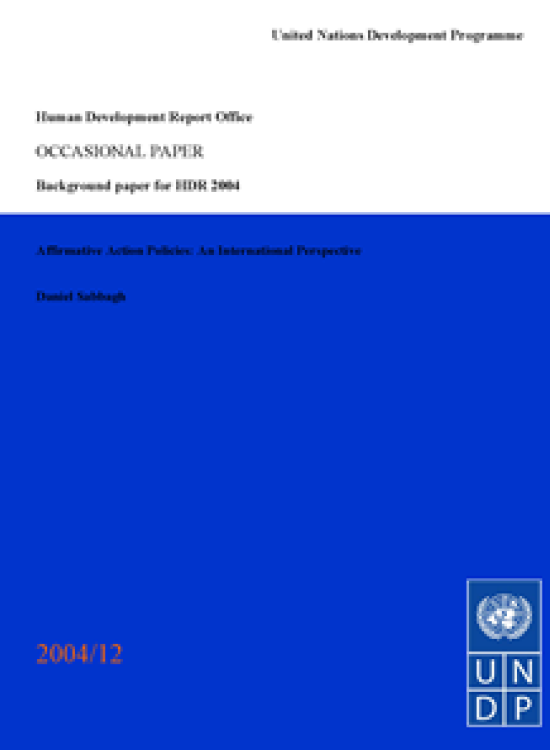Affirmative Action Policies: An International Perspective

Download Report by Language
Document
hdr2004danielsabbagh.pdf
(474.66 KB)
Citation
Sabbagh, Daniel. 2004. Affirmative Action Policies: An International Perspective. New York.
Affirmative Action Policies: An International Perspective
Posted on: January 01, 2004
Broadly defined, affirmative action encompasses any measure that allocates goods – such as admission into universities, jobs, promotions, public contracts, business loans, and rights to buy and sell land – on the basis of membership in a designated group, for the purpose of increasing the proportion of members of that group in the relevant labor force, entrepreneurial class, or university student population, where they are currently underrepresented as a result of past or present discrimination1. These measures go beyond antidiscrimination policy strictly conceived. Their existence may result from constitutional mandates, laws, administrative regulations – such as requirements on public contractors –, court orders or voluntary initiatives. Their goal is to counter deeply entrenched social practices that reproduce group-structured inequality even in the absence of intentional discrimination.